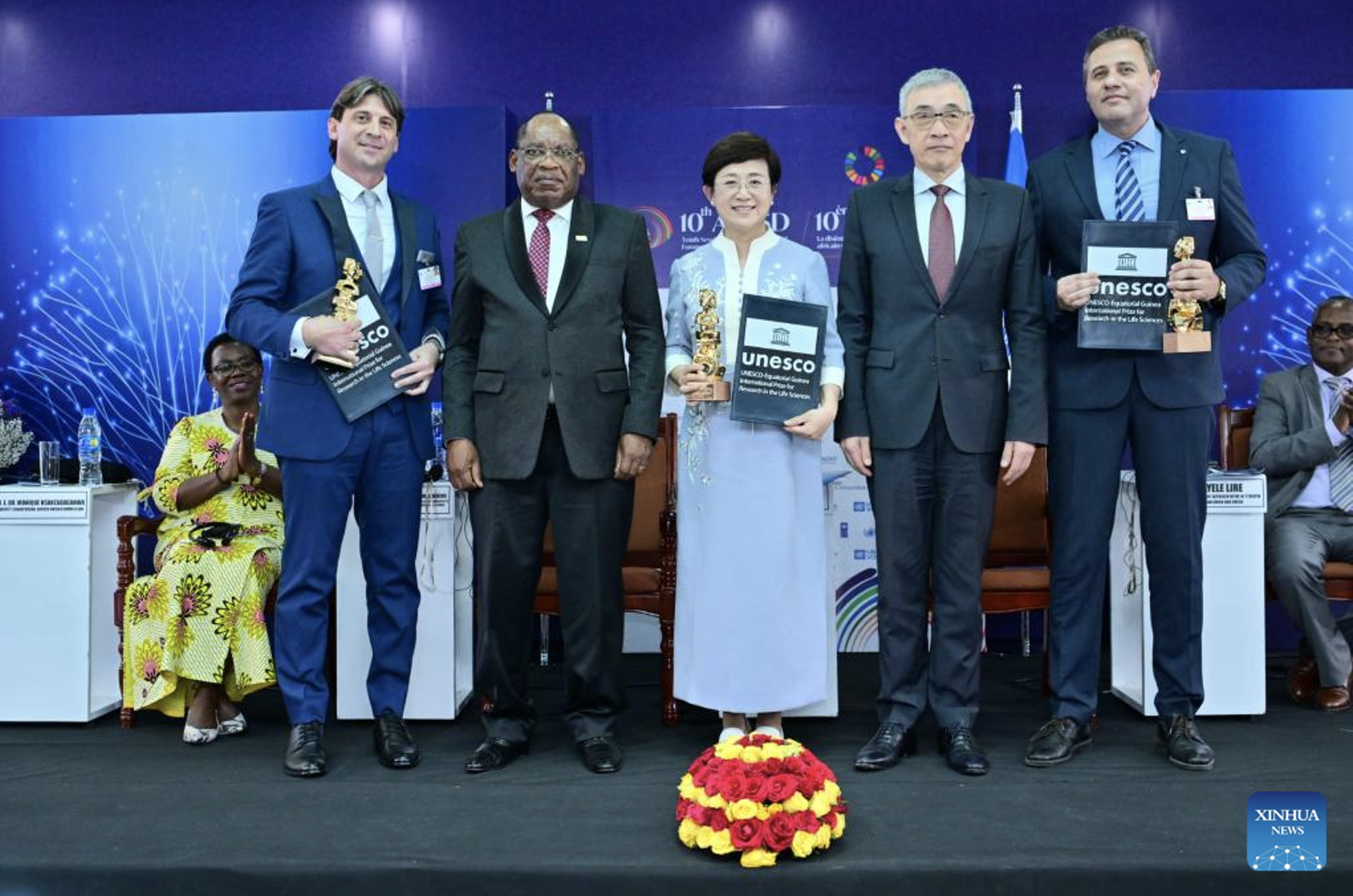2024 UNESCO International Prize for Research in the Life Sciences goes to three scientists from China, Egypt and Greece
http://en.people.cn/n3/2024/0425/c90000-20161248.html https://www.unesco.org/en/prizes/equatorial-guinea Qiao Jie of China, Mohamed Ali Farag of Egypt, and Triantafyllos Stylianopoulos of Greece received the awards for outstanding contributions to improving the quality of human life through scientific research at a ceremony held in Addis Ababa on the sidelines of the 10th Africa Regional Forum on Sustainable Development. The prize is funded by Equatorial Guinea and is given annually to a maximum of three laureates. This year’s winners received a monetary award of 350,000 U.S. dollars, divided equally among them. It was handed over by Qu Xing, UNESCO deputy director-general. Qiao Jie is a specialist in reproductive medicine and won the prize for helping couples conceive healthy babies and improving reproductive health, especially for women. She studied the detailed genetic processes and developed innovative techniques for preimplantation genetic diagnosis, a procedure that can dramatically improve the success rate of in vitro fertilization (IVF) and help avoid the transmission of genetic diseases through IVF. Her most revolutionary contribution to improving women’s reproductive health has been her discovery of microbiomes that cure reproductive disorders among females. Farag is a specialist in metabolomics and one of the pioneers in this field in Africa. He has developed a metabolomic platform, which is the first of its kind in Africa. His discovery has enabled scientists to observe volatile compounds emitted by microbes for both medical and agricultural applications and has already aided in identifying novel biocontrol agents from soil bacteria that can boost plant growth. Stylianopoulos is spearheading research into cancer therapies. He won the prize for his research that leveraged the principles of biomechanics, blending physics and biology to improve the delivery and efficacy of cancer treatments for patients who face the grim prognosis of solid tumors.


